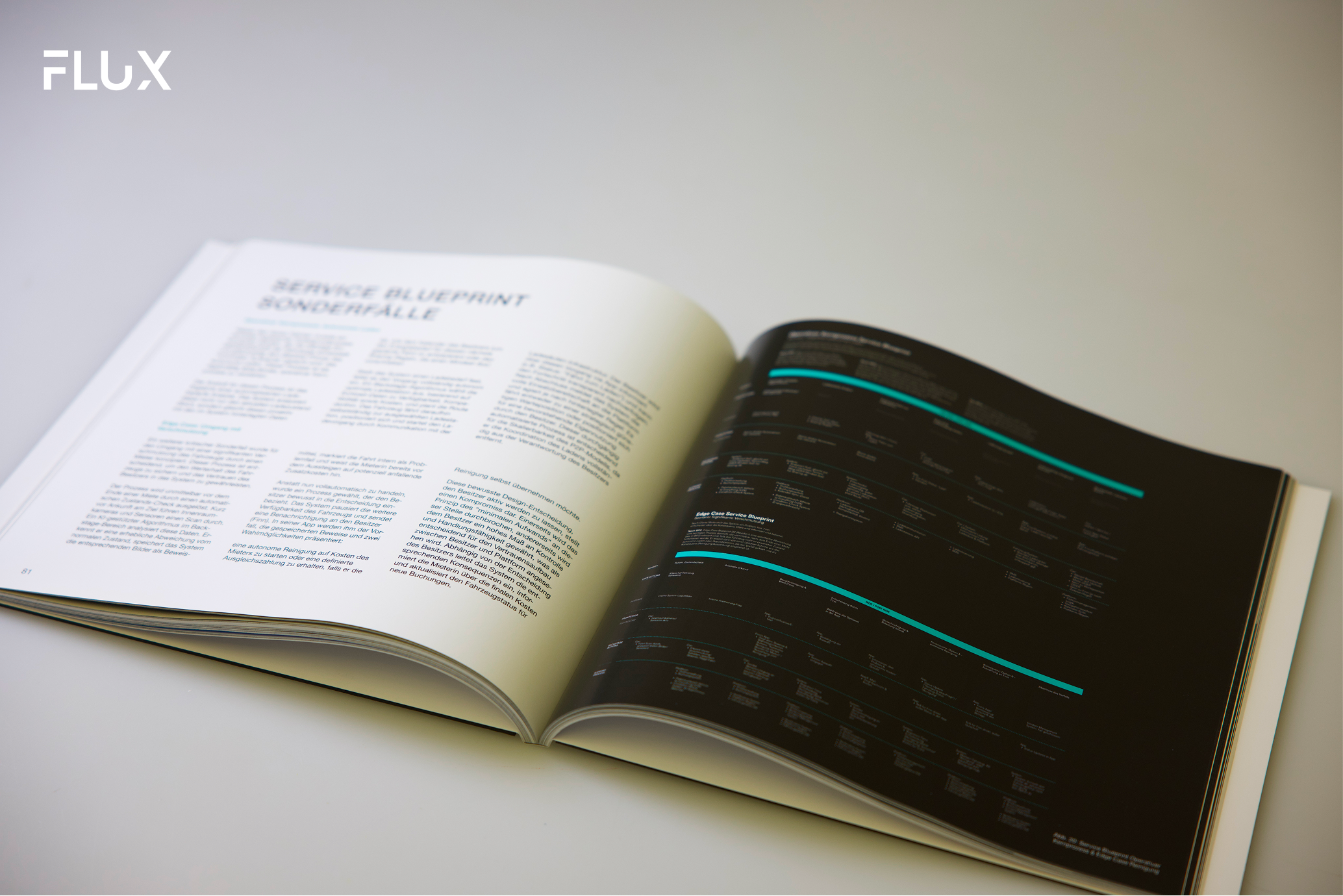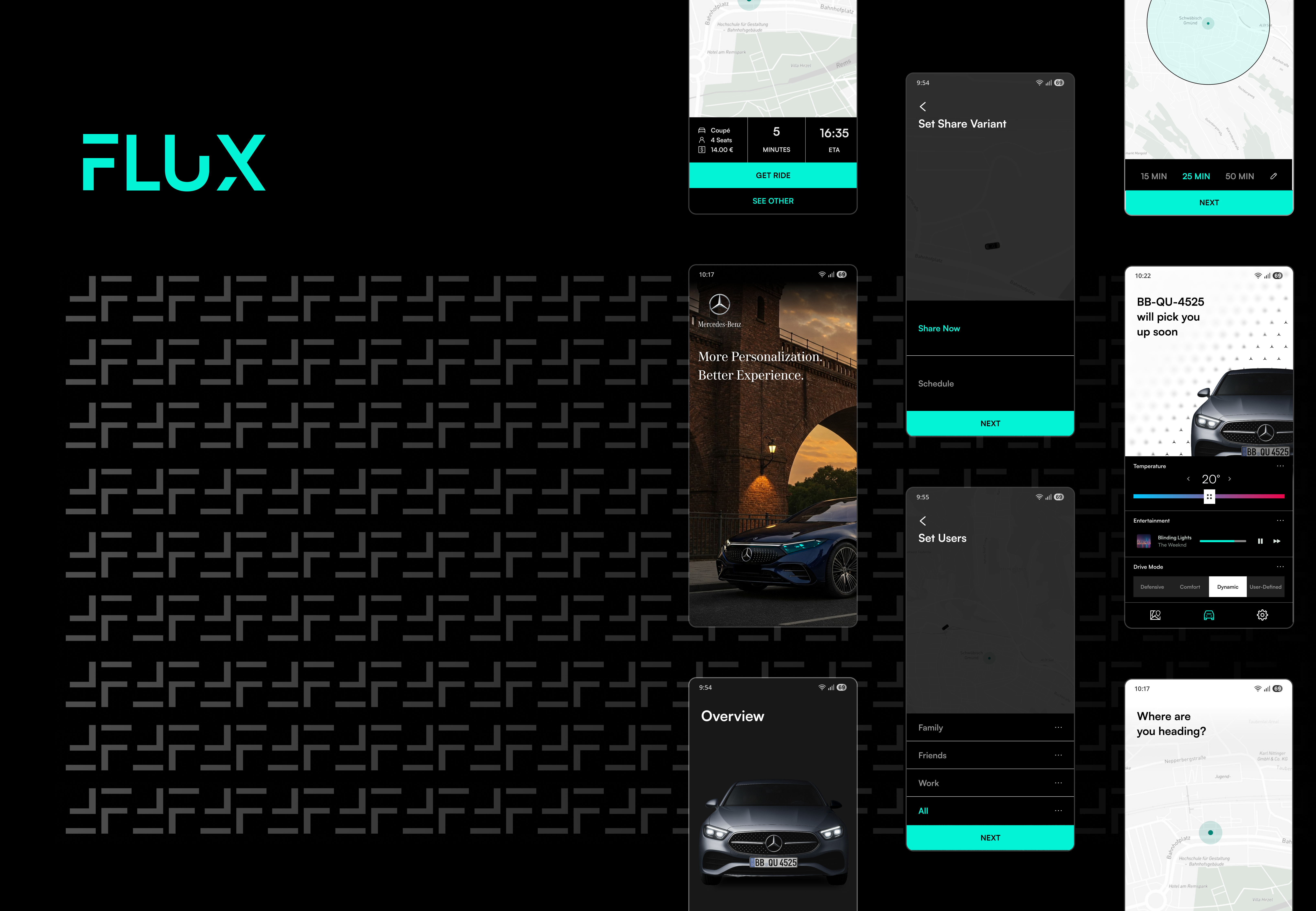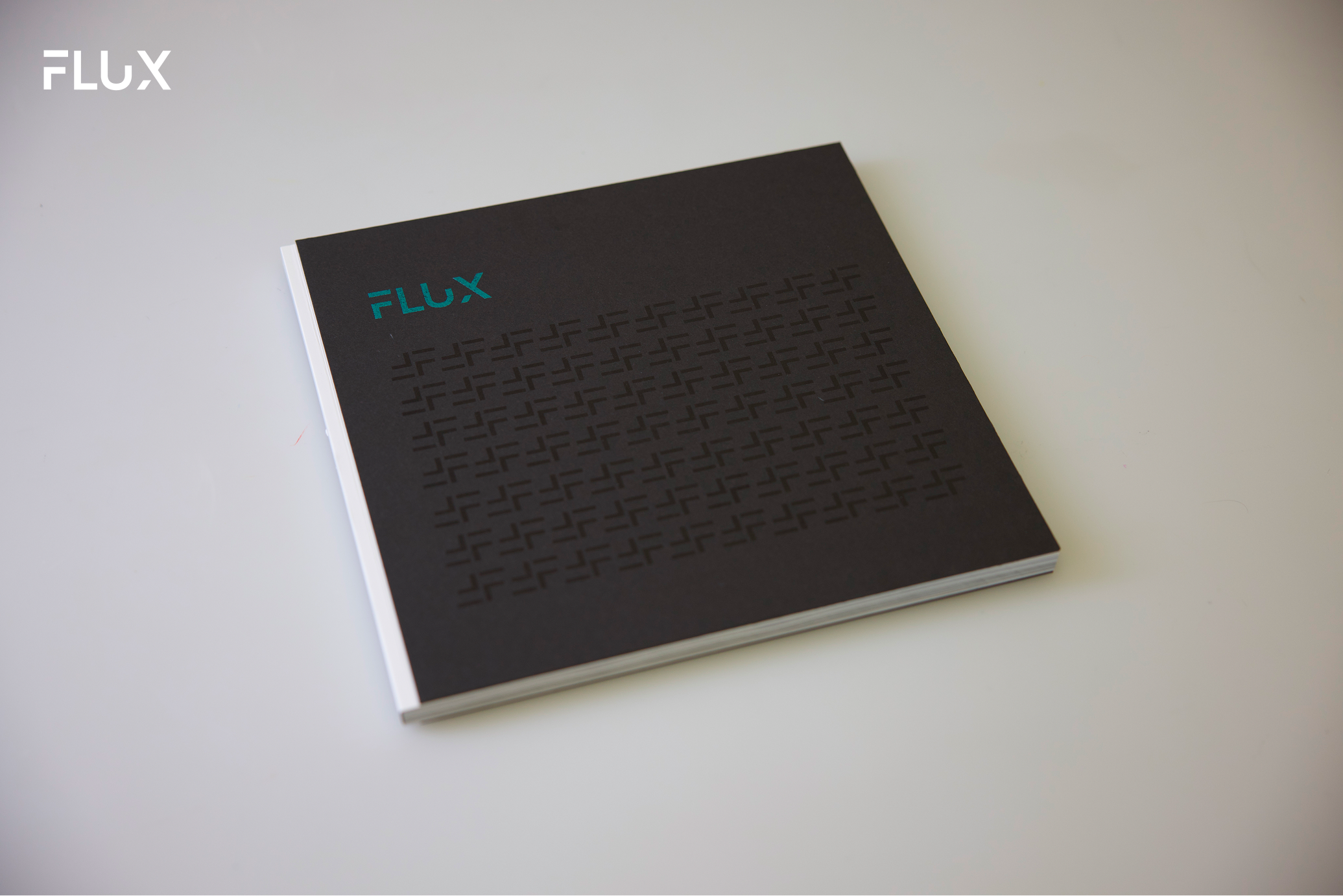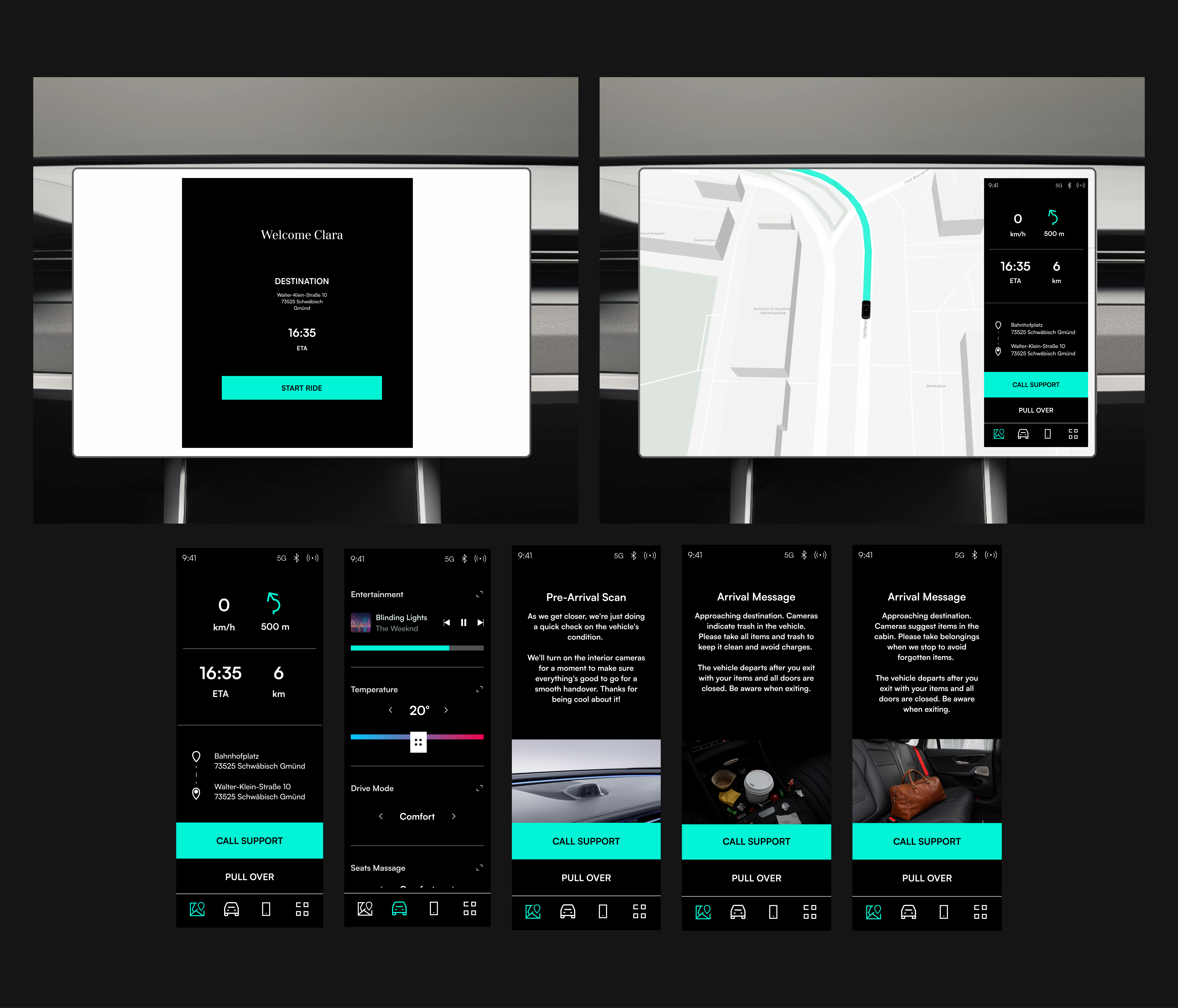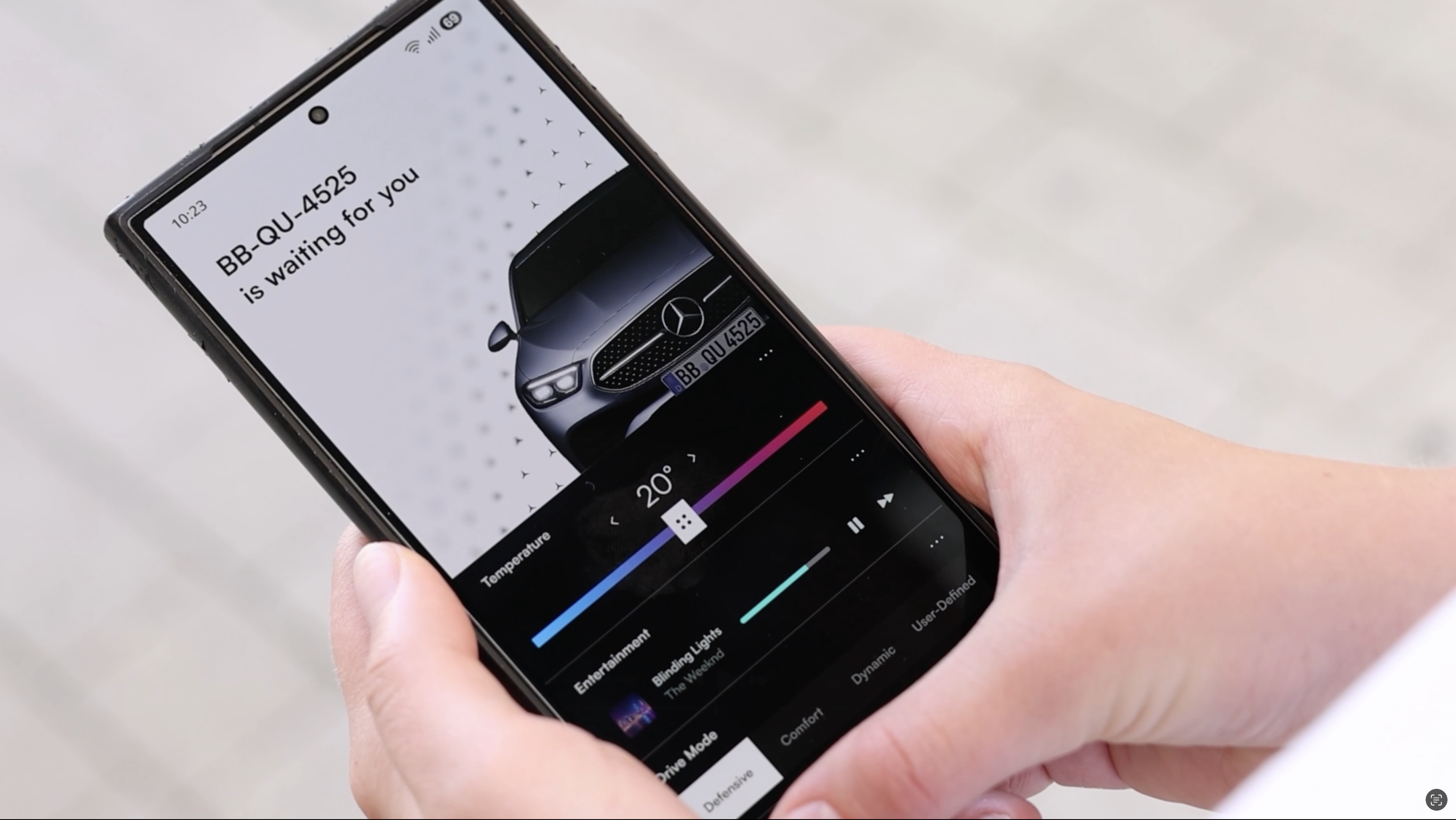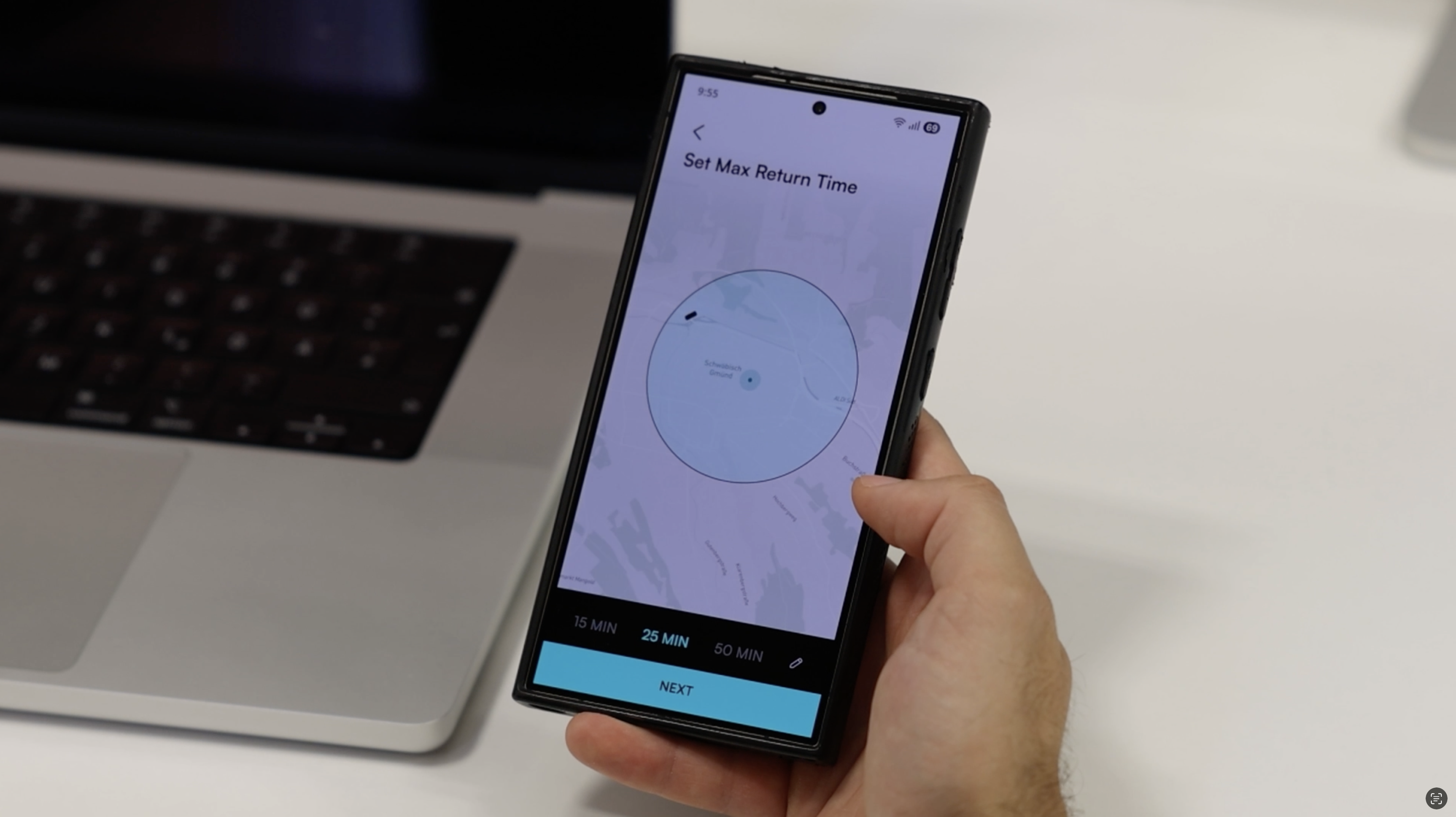
FLUX started with a fundamental question: what if your car could be a source of income when you're not using it, bridging the gap between vehicle owners and urban mobility needs? Developed as a master's thesis in partnership with Mercedes-Benz, the concept introduces a seamless peer-to-peer ecosystem for autonomous vehicles. It allows car owners to effortlessly share their vehicle with just a few clicks in an app, defining the time, operational radius, and user groups, thus turning idle time into passive income. For the renter, FLUX offers a highly personalized and comfortable journey. Through the app, they can book a ride and customize the in-car experience—from driving style to climate and entertainment—before the vehicle even arrives. The in-car interface builds trust by transparently showing what the car perceives and its intended actions. This concept, validated by experts at Mercedes-Benz, was praised as a "promising and well-thought-out solution" that elegantly connects the need for private vehicle ownership with the efficiencies of the sharing economy.
RESEARCH
Market & Competitor Analysis, Trend Research, User Interviews, Expert Interviews
STRATEGY & REQUIREMENTS
Requirements Definition, Market Segmentation, Persona Creation, Stakeholder Mapping, Service Blueprints
UX DESIGN
Experiential Futures Ladder, User Journey Mapping, Network Diagram
UI DESIGN
Low-Fidelity Wireframes, Design System, High-Fidelity Prototypes
VALIDATION
Expert Validation, Concept Refinement & Iteration
STRATEGY
FLUX's strategy is a peer-to-peer ride-hailing ecosystem designed to monetize the idle time of private autonomous vehicles. The primary target groups are twofold: vehicle owners (pragmatic "Sharers") who commute into the city and want to offset the high cost of ownership, and urban residents ("Users") who desire the comfort and flexibility of a private car without the burdens of owning one. Using the manufacturer's integrated app, an owner can share their car with a few simple clicks. The system is designed for minimal effort on the owner's part, while providing them with full control over availability and earning passive income. For the User, the app provides a seamless booking process. Before the autonomous vehicle arrives, they can personalize the entire ride, creating a comfortable and private experience tailored to their needs.

RESEARCH INSIGHTS
The focus of the Master's thesis was on an innovative and future-oriented mobility system. In this context, the project explored how to overcome the primary hurdles of peer-to-peer sharing—namely the high organizational effort and lack of trust for owners. The research investigated how autonomous technology could solve these issues. To achieve this, in-depth interviews were conducted with potential vehicle owners and users to identify their specific "pain points" and needs. Additionally, expert interviews with professionals in city planning, automotive trend research, and mobility management helped frame the systemic challenges and opportunities. The research focused on understanding the core user needs: for owners, this was minimal effort, security, and control; for users, it was convenience, comfort, and a stress-free journey.
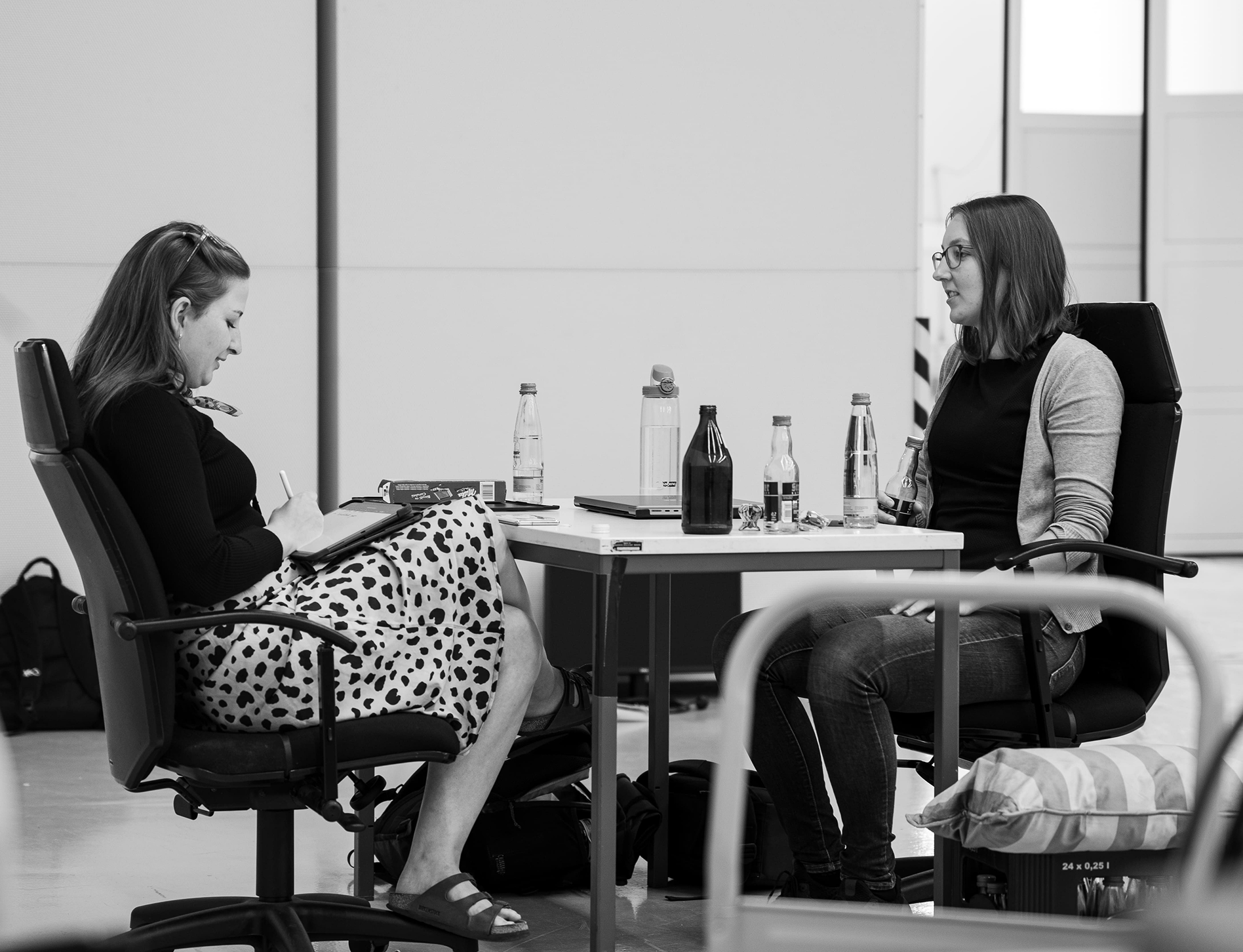
APPROACH
The project followed a Design Thinking process combined with the Double Diamond framework. Through multiple iterative cycles, insights from user and expert interviews were synthesized to create detailed Personas, Service Blueprints, and User Journey Maps. These tools helped to clearly define the complex interactions within the ecosystem. In the final stage, a high-fidelity, interactive prototype of the smartphone app and the in-car HMI was developed. During qualitative user testing sessions with UX and Digital Design experts at Mercedes-Benz, the concept was validated. The feedback was unanimously positive, with experts describing the solution as logical, intuitive, and highly relevant for the future, confirming the project's core value proposition.

DESIGN
What makes this concept unique is the seamless integration of a sharing ecosystem directly into the vehicle manufacturer's native platform. The design prioritizes simplicity and trust. For the owner, the journey begins with a simple "Share My Car" button in their app, leading to an intuitive setup where they can define recurring schedules, the vehicle's maximum return time, and even limit the service to trusted groups like "Family & Friends." For the renter, the experience starts with a simple destination entry. The app then allows them to personalize their ride by adjusting the driving mode, climate, and entertainment. Inside the vehicle, the HMI builds trust by transparently showing what the car perceives and its next intended maneuvers, while permanent access to "Call Support" and "Pull Over" functions ensures the passenger always feels in control.

LEARNINGS
FLUX showed that a successful autonomous P2P ecosystem hinges on solving two core challenges: radically minimizing the owner's effort and building profound trust for both parties. The key learnings are threefold:
- Deep Integration is Key: Making the sharing service a native vehicle function, rather than a third-party app, is crucial for acceptance and usability.
- Empower the Owner: Giving the owner simple yet powerful controls over their valuable asset is essential to overcome the trust barrier of sharing with strangers.
- A Premium Renter Experience: The service must offer a level of comfort, personalization, and reliability that is significantly superior to traditional car-sharing or public transport.
